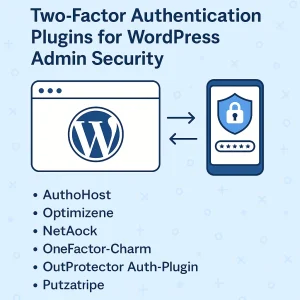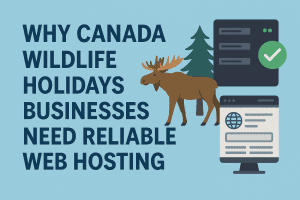 Picture this: your website is climbing the search engine ladder, traffic is flowing, and everything seems perfect… until suddenly, your rankings plummet. You scramble to identify the culprit, only to realize that toxic backlinks are dragging your site down. Enter Google's "Disavow Links" tool – the unsung hero for digital marketers facing the dark side of SEO. But while this tool can be a lifesaver, using it incorrectly can do more harm than good.
Picture this: your website is climbing the search engine ladder, traffic is flowing, and everything seems perfect… until suddenly, your rankings plummet. You scramble to identify the culprit, only to realize that toxic backlinks are dragging your site down. Enter Google's "Disavow Links" tool – the unsung hero for digital marketers facing the dark side of SEO. But while this tool can be a lifesaver, using it incorrectly can do more harm than good.
In this blog, we're going deep into the details of Google's Disavow Links tool and provide you with the insights that can help protect your site and make it better. Whether you are an experienced SEO professional or a business owner just entering the online arena, you will find that you need to understand how to handle harmful backlinks. And if you feel a bit overwhelmed, do not worry, because you can always Contact Our SEO Experts for Link Cleanup Assistance!
By the end of this guide, you will not only learn the power of disavowing links but also discover Effective lead generation tactics and Advanced backlink analysis techniques to strengthen your SEO game.
What is Google’s “Disavow Links Tool” and why did they create it?
Google's tool known as Disavow Links allows website owners to tell Google to ignore specific backlinks pointing to their site. This feature is especially useful if your site is affected by spammy artificial, or low-quality backlinks which might bring your ranking level down; hence, "disavowing" such links tells Google that you would not want them counted when considering your site's standing.
However, one has to use the tool with extreme caution because getting rid of links that were created by the spammers may erase some good-quality backlinks from the website, therefore, hurting your SEO performance.
- Why Google designed the Disavow Links Tool;
- How importance has changed after algorithm updates.
- Why did Google create the Disavow Links Tool?
- Google has battled with spammy link-building for more than a decade.
When to Use the Tool
Only use this for spammy, artificial links pointing to your website. Never disavow links from a website for any other reason, such as because it has a low PR. This may damage your site's ranking in an irreversible way. You see, algorithms from Google are very fine-tuned, so you don't want to do anything drastic that could throw them off.
How To Use It
- Go to your Google Webmaster Tools account and click on the website you'd like to work on.
- On your dashboard, select "Search Traffic" and then "Links to Your Site."
- Select "More" under "Who Links Most"
- Download "More Sample Links." Alternatively, you could download "Latest Links" so you can view dates.
All of the pages that link to your website will be in this downloaded file. Use it to create a text file of the links you want to disavow. Each link should be on its own line. If you have some links to disavow from a whole site, you can use "domain:example.com" on one line instead of all the links. To add a comment, start the line with the # symbol. Google says this is a good-formatted text file:
Save the list of links as a.txt file. Make sure each link is on a new line. If you want to disavow links from an entire domain, use the format:
domain:example.com
- Go to the Google Disavow Tool, select your website, and upload the.txt file. Click "Submit" to finish.
- 7. Keep monitoring your backlink profile and repeat this process if new harmful links appear.
Why Use the Disavow Links Tool?
- Negative SEO Attack Prevention: In some cases, competitors or harmful actors can develop negative backlinks to your website to bring it down. This is known as negative SEO. Disavowing such links will protect your site from penalties.
- Penalty Recovery: If Google penalizes your website due to unnatural backlinks, you can use the Disavow Links tool to recover by rejecting those links.
- Preemptive Cleanup: Even if you have not been penalized, regularly reviewing and disavowing toxic links can prevent future issues. Advanced backlink analysis will help you to find toxic links before they become problematic.
Points to Consider Before Using the Disavow Links Tool
Evaluate Links Thoroughly
Not all low-quality links harm your website. Before disavowing any link, conduct a comprehensive backlink audit to assess the quality of each link. Focus on links that:
- Originate from spammy or irrelevant sites.
- Have a high spam score.
- Appear in bulk link directories.
Prioritize Manual Removal
Google recommends attempting to manually remove harmful links by contacting site owners first. The Disavow tool should be a last resort. This demonstrates to Google that you’ve made an effort to resolve the issue naturally.
Understand the Risks
Incorrectly disavowing healthy links can harm your SEO. Therefore, it’s vital to consult with professionals or leverage Contact Our SEO Experts for Link Cleanup Assistance! if you’re unsure.
Keep Track of Your Disavow File
Maintain a record of links you’ve disavowed. This documentation can be helpful for future audits and appeals.
How to Use Google's Disavow Links Tool: A Step-by-Step Guide
Backlink Audit
Use tools like Ahrefs, Moz, or Google Search Console to analyze your backlink profile.
Identify Harmful Links
Look for patterns of spammy or irrelevant backlinks.
Create a Disavow File
Format a simple.txt file listing the URLs or domains you wish to disavow. For example:
# Disavowing spammy links
http://example.com/spam-link
http://spammydomain.com
Submit to Google
Navigate to Google's Disavow Links tool and upload your.txt file.
Monitor Progress
Check Google Search Console regularly to confirm that no penalties remain.
Power Lead Generation Techniques with a Clean Backlink Profile
A clean backlink profile strengthens your credibility and improves SEO. The following lead generation techniques should be maximized after cleanup:
- Content Marketing : Content is the reason for organic backlinks and generates leads. It includes blog posts, infographics, and white papers that help drive traffic and shares.
- Guest Posting : Publish guest articles on authoritative sites to create powerful backlinks and increase brand visibility.
- Partnerships and Collaborations : Leverage influencers and other businesses to create quality backlinks and leads.
Advanced Backlink Analysis for Continued Success
Backlink analysis is not a one-time activity; it is an ongoing process. Here are some advanced techniques to stay ahead:
- Specialized Tools : Platforms like Ahrefs and SEMrush provide deep backlink analysis, showing potential risks and opportunities.
- Competitor Analysis : Analyze competitors' backlink profiles to identify link-building opportunities and assess the quality of your backlinks.
- Track Link Velocity : Sudden spikes in backlinks could indicate spammy activity. Monitoring link velocity helps detect unusual patterns early.
Common Disavow Links Mistakes
You could save a lot of time and frustration if you avoid some common disavow link tool mistakes. Matt Cutts, the head of web spam at Google, made a video about common mistakes he and his team encounter when it comes to the disavow links tool. These are:
- Using the wrong file type. When you upload your text document, it goes to a parser, which parses out the information it needs to consider your request. If the document is anything other than a.txt file, the parser will reject it. So no Word documents, and no Excel spreadsheets. Just a simple.txt document with UTF-8 or 7-bit ASCII encoding.
- Cherry picking which links to remove. Some of the time going in there with a perfect approach to precisely what links should be removed gets tedious and becomes unnecessary since perhaps you do not find all that pesky spam website has backlink. You just want to handle some of your websites at some point using "domain:", instead of pick-one-link-at a time.
- Wrong “Domain:” syntax. This attribute should be typed out as “domain:example.com.” Not “domain:www.example.com” or “domain:http://www.example.com.”
- In the text file, provide background and context. If you put a long back-story in your text file, there is a chance that the parser will reject it, even if you put the # sign. The best place to include the context of the situation is in the reconsideration request itself. If you're including context in the text file, keep it to one line.
- Treating the tool like a cure-all. The disavow links tool isn't there to fix all your backlink ailments. The best thing to do if you've got spammy backlinks is to remove as many of them as you possibly can yourself. The tool's just for Google to reconsider links that you don't have a say in the matter over. Google takes that into consideration when you've made an effort to manually clean up your link profile.
Conclusion
Google's Disavow Links tool is a powerful resource for safeguarding your website against harmful backlinks. However, wielding this tool requires careful consideration and strategy. By conducting Advanced backlink analysis and employing Effective lead generation tactics, you can maintain a robust online presence and avoid SEO pitfalls.
If you require professional advice or are unsure of how to disavow links, don't hesitate to Contact Our SEO Experts for Link Cleanup Assistance! Protect your website, boost your rankings, and watch your leads grow effortlessly.
FAQ: Google’s Disavow Links Tool
Question : When should I use the Disavow Links tool?
Answer : Use the tool when spammy, low-quality, or artificial backlinks negatively impact your website’s performance or if you suspect negative SEO attacks.
Question : Can disavowing links hurt my website’s rankings?
Answer :Yes, if you disavow high-quality or neutral links by mistake. Always conduct thorough backlink analysis before disavowing any link.
Question : How often should I disavow links?
Answer :Disavow links only when necessary, such as during regular backlink audits or if you notice a significant drop in rankings due to harmful links.
Question : Do I need to manually remove links before disavowing them?
Answer : Yes, Google recommends attempting manual removal by contacting site owners before using the Disavow tool.
Question : Can I undo a disavow submission?
Answer : Yes, you can update or remove the disavow file at any time by uploading a new file.
Question : How long does it take for Google to process disavowed links?
Answer : It can take several weeks for Google to reflect the changes. Patience is key.
Question : What tools can I use to identify harmful links?
Answer : Use tools like Ahrefs, Moz, SEMrush, and Google Search Console to conduct backlink audits and identify harmful links.














